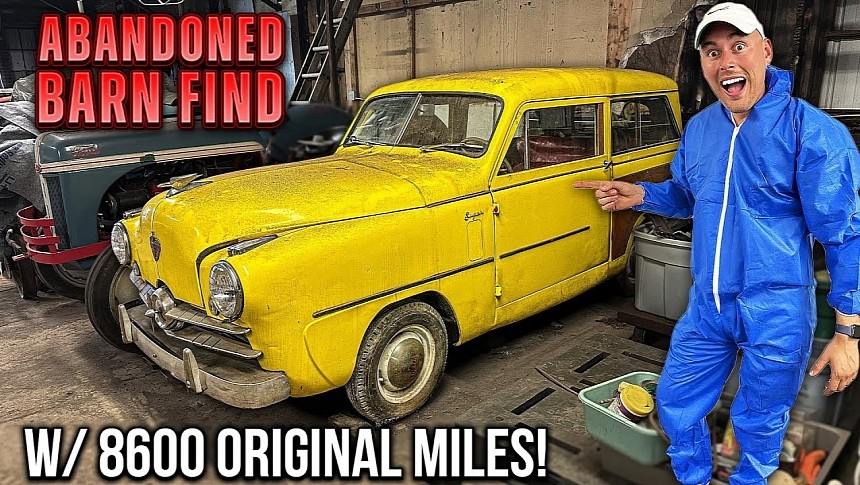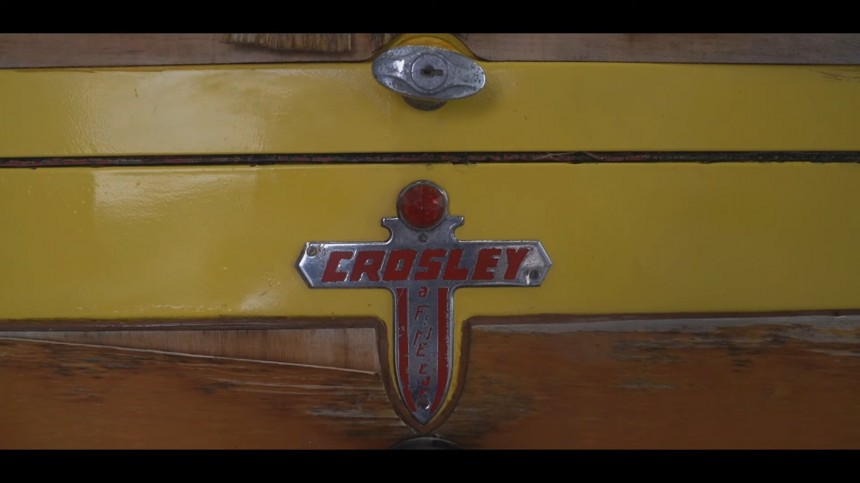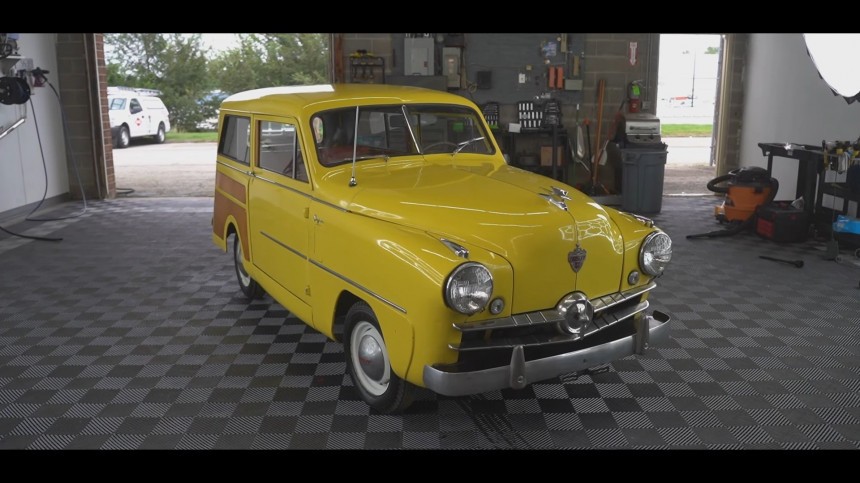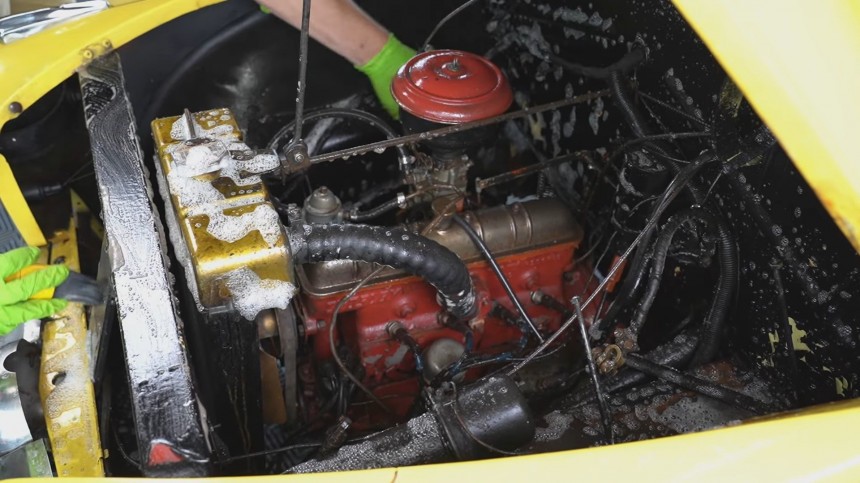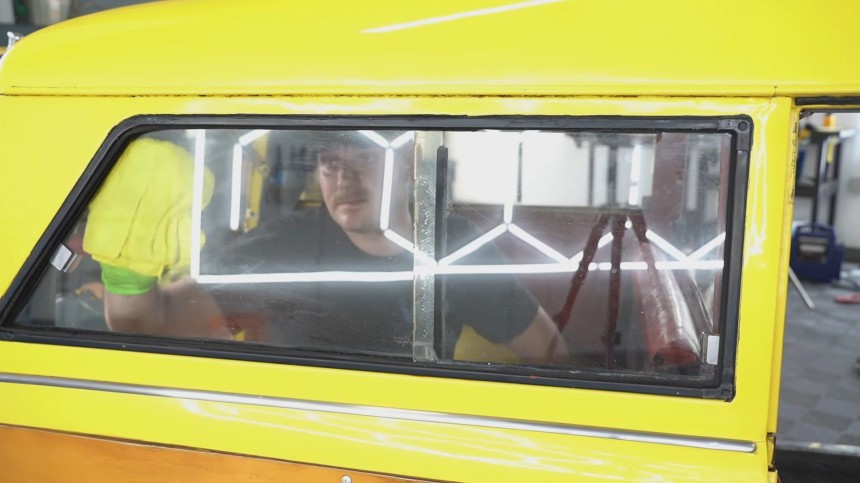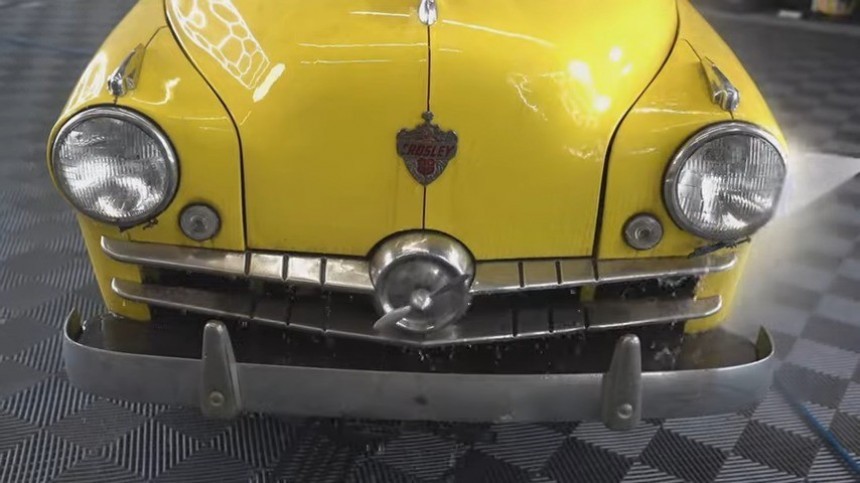What could be the common denominator of the following American public figures: a five-star Army General, a president, a vice president, a billionaire, a Hollywood emblem, and an architect? The answer is – perhaps not at all surprisingly – a car—specifically, a Crosley automobile, like the one starring in this story.
Omar Bradley, Dwight Eisenhower, Nelson Rockefeller, Humphrey Bogart, and Frank Lloyd Wright are some of the most notable owners of this quirky brand of forgotten automobiles. If you punch ‘Crosley’ in a search engine, the answer most likely to top the list of suggestions is the Crosley household appliance website. And nostalgic readers will remember the days when the Crosley Shelvador refrigerator – the first cold food storage unit for domestic use to have door shelves.
Alternatively, audiophiles will raise an eyebrow upon hearing the names of their vintage record players or turntables. And the word has other historical echoes – the first affordable in-car radio in the U.S. was a Crosley brand. The first cheap radio for domestic use in America was the ‘Harko’ built by the same Crosley company.
Powel Crosley Jr. was a businessman with vast intentions and great success – the federal government would appoint his Cincinnati, Ohio, radio broadcasting station to make the Voice of America heard all over the world during the heat of World War II.
So it’s not exactly a far-fetched idea that the corporation would try its hand at making automobiles – and one of them is featured in the attached video from WD Detailing YouTube Channel. Crosley Motors introduced the first 60 mpg compact vehicle to the American public in 1939.
Like all other auto manufacturers in the United States of Automobile, Crosley shut down civilian production to support the war effort – it was the last car company to make that switch at the end of February 1942.
After the world got back to its regular program, Crosley expanded its offer of cars – but America was not interested in the diminutive vehicles with refrigerator badges on them. Nevertheless, the Crosley cars would be manufactured – in small numbers, truth be told – until one day before the Fourth of July fireworks of 1952.
Although the Crosley automobiles – like many of the corporation’s other products – were advanced in concept and technology, they lacked the appeal the Detroit giants cast upon their cars. The Crosleys were small – one might say very small – cars, as we can see in the video.
A wheelbase of 80 inches (2,032 mm) separates the two solid-beam axles. Bumper to bumper, the Crosley Super Station Wagon measures 148.25 inches (3,765 mm) and is just 57 inches tall and 50 inches wide (1,448 mm and 1,270 mm, respectively).
To add to this already fatal flaw, they were equally underpowered (although, mathematically, they weren’t. More on this in a moment). This particular 1951 station wagon can carry four adults and their respective luggage. Or, more accurately put, it could do this trick when it ran on its power. Which, as I stated earlier, wasn’t impressive at all: 27 hp from a 44 cubic-inch inline-four.
That’s not a typo, but the actual motor displacement: 721 CCs – one fluid ounce under three-quarters of a liter – produced 33 lb-ft (45 Nm). This home-appliance-like performance was going to a three-speed manual gearbox before putting some spin on the rear wheels.
The above numbers are more commonly associated with lawnmowers or ceiling fans. Still, the car’s overall weight of just 636 kg / 1,402 lbs meant that the power-to-weight ratio was on the same level as the big cars America was buying.
Believe it or not (but please do), Crosley introduced the disc brakes to the U.S. public – in 1949. What it did not present, however, was modernity and creature comforts. Don’t think of plush interiors or some high-tech like an in-car record player – settle for something more commonplace, like rolling windows.
As we can see, the car in the video has sliding sheets of glass at the back. And what do you think of the instrumentation? A highly optimist 70-mph (113 kph) speedometer, the odometer, and the usual gauges – fuel, amps, water, oil – are all the engine feedback the driver of a 1951 Crosley Super Station Wagon gets.
The tiny Crosley didn’t bat an eyelid compared to other ‘proper’ cars of the era: the hood ornament – a diving eagle – is luxury-car-sized, and the grille propeller is a very cool – albeit useless – feature. It adorned the front end of Crosley wagons from 1950 until the company’s demise in 1952.
It serves no practical purpose, but it is a subtle reference to the ‘Moonbeam’ airplanes – five of them in total – built by Crosley in 1929 before the Big Depression cut the wings off his ambitions (pun intended).
The yellow woodie we see taking its first bath in many years has a curious particularity – the odometer reads just 8,600 miles (some 13,900 km). However, it appears that the car has had more than one repaint during its 72-year history, which begs the question of body originality (or perhaps a rollover service record).
Another exciting feature of the Crosley is the overhead camshaft engine – the first mass-produced motor (think of an order of magnitude of tens of thousands) in American cars to have this architecture. And, in a cynical twist of irony, the company that earned its name and fame in the radio-making and broadcasting business equipped its cars with Motorola, Philco, or Zenith receivers but not Crosley units.
The reason is simple: Powel Crosley sold the radio company before starting the motorcar enterprise. After striking gold twice with the radio and refrigerator businesses, Powel Crosley had to admit defeat in the auto world. The small independent maker did not survive the attrition war against the ever-growing dominance of General Motors, Ford, and Chrysler and eventually faded away into history, like all the other car companies outside the Big Three cartel.
Alternatively, audiophiles will raise an eyebrow upon hearing the names of their vintage record players or turntables. And the word has other historical echoes – the first affordable in-car radio in the U.S. was a Crosley brand. The first cheap radio for domestic use in America was the ‘Harko’ built by the same Crosley company.
Powel Crosley Jr. was a businessman with vast intentions and great success – the federal government would appoint his Cincinnati, Ohio, radio broadcasting station to make the Voice of America heard all over the world during the heat of World War II.
Like all other auto manufacturers in the United States of Automobile, Crosley shut down civilian production to support the war effort – it was the last car company to make that switch at the end of February 1942.
After the world got back to its regular program, Crosley expanded its offer of cars – but America was not interested in the diminutive vehicles with refrigerator badges on them. Nevertheless, the Crosley cars would be manufactured – in small numbers, truth be told – until one day before the Fourth of July fireworks of 1952.
A wheelbase of 80 inches (2,032 mm) separates the two solid-beam axles. Bumper to bumper, the Crosley Super Station Wagon measures 148.25 inches (3,765 mm) and is just 57 inches tall and 50 inches wide (1,448 mm and 1,270 mm, respectively).
To add to this already fatal flaw, they were equally underpowered (although, mathematically, they weren’t. More on this in a moment). This particular 1951 station wagon can carry four adults and their respective luggage. Or, more accurately put, it could do this trick when it ran on its power. Which, as I stated earlier, wasn’t impressive at all: 27 hp from a 44 cubic-inch inline-four.
The above numbers are more commonly associated with lawnmowers or ceiling fans. Still, the car’s overall weight of just 636 kg / 1,402 lbs meant that the power-to-weight ratio was on the same level as the big cars America was buying.
Believe it or not (but please do), Crosley introduced the disc brakes to the U.S. public – in 1949. What it did not present, however, was modernity and creature comforts. Don’t think of plush interiors or some high-tech like an in-car record player – settle for something more commonplace, like rolling windows.
The tiny Crosley didn’t bat an eyelid compared to other ‘proper’ cars of the era: the hood ornament – a diving eagle – is luxury-car-sized, and the grille propeller is a very cool – albeit useless – feature. It adorned the front end of Crosley wagons from 1950 until the company’s demise in 1952.
It serves no practical purpose, but it is a subtle reference to the ‘Moonbeam’ airplanes – five of them in total – built by Crosley in 1929 before the Big Depression cut the wings off his ambitions (pun intended).
Another exciting feature of the Crosley is the overhead camshaft engine – the first mass-produced motor (think of an order of magnitude of tens of thousands) in American cars to have this architecture. And, in a cynical twist of irony, the company that earned its name and fame in the radio-making and broadcasting business equipped its cars with Motorola, Philco, or Zenith receivers but not Crosley units.
The reason is simple: Powel Crosley sold the radio company before starting the motorcar enterprise. After striking gold twice with the radio and refrigerator businesses, Powel Crosley had to admit defeat in the auto world. The small independent maker did not survive the attrition war against the ever-growing dominance of General Motors, Ford, and Chrysler and eventually faded away into history, like all the other car companies outside the Big Three cartel.
